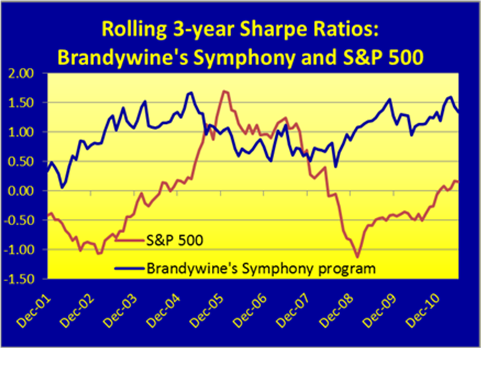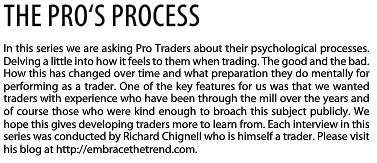Originally published in the Brandywine Asset Management Monthly Report.
It’s not a cliché. The key to successful investing is to control losses. May’s loss is an endorsement of Brandywine’s approach to controlling risk. There were few bright spots in the trading of Brandywine’s Symphony program during May, yet the final loss amounted to just 3% (in contrast, the S&P 500 has lost more than 3% six times in a single day since the inception of Brandywine’s Symphony program in July 2011).
Brandywine controls risk by taking a “top-down” approach that incorporates risk management as an integral requirement in Brandywine’s portfolio allocation model. In contrast, judging by the questions we receive from investors, it is apparent that many other managers control risk by imposing constraints on the positions in their portfolio. These take the form of market and sector position limits, stop-loss limits on trades or overall portfolio stop-losses. It is Brandywine’s belief that if a portfolio allocation model suggests position sizes or permits losses that need to be constrained, then there is a flaw in that model. To correct for those flaws – after the fact – by imposing constraints, is akin to putting earrings on a pig; you can dress it up, but it ain’t pretty.
We can trace this practice (of putting earrings on a pig) back to the start of the modern era of portfolio management, the publication of Harry Markowitz’s “Portfolio Selection” in 1952. When Brandywine began its research into its portfolio allocation model in the late 1980s, we came to recognize the flaws in mean-variance modeling. (Mike Dever covered this topic specifically in his well-received presentation titled “The Fatal Flaw in Mean-Variance optimization” at the QuantInvest conference in New York City in 2012.)
The goal of mean-variance modeling is to create an “optimized” portfolio and it does so by calculating an “efficient frontier,” which indicates the allocations to be made to portfolio constituents in order to achieve the best possible return for any given level of risk (defined as volatility). Many practitioners of this type of modeling realize the output is only theoretical, and often impractical, and this is the reason they compensate for this by modifying the output from their portfolio allocation models by imposing market or sector constraints.
This points out the fatal flaw in mean-variance modeling. It was developed in answer to the wrong question. Instead of asking “how can I get the optimal results given these investment/trade inputs?”, the correct question is “how can I get the most predictable results?”. This was the question Brandywine asked when we began the process of developing our portfolio allocation model in the late 1980s.
After years of researching this issue, Brandywine concluded that the greatest probability that future performance would match past performance could be achieved by establishing balance across the markets and trading strategies employed in the portfolio. The result is that Brandywine’s portfolio allocation model is designed to ensure that, over time, each market makes an equal contribution to the portfolio’s risk. It is this portfolio balance that precludes the need for Brandywine to impose any “after-the-fact” constraints in the portfolio’s positions. It is already in balance as a natural outcome of having asked the correct question when developing the model.
Recently, others have begun to recognize the fatal flaw in mean-variance modeling. This has led to the popularization of “risk parity” investing, which attempts to allocate to portfolio constituents based on risk, rather than optimizing based on risk-adjusted return. It’s a step in the right direction and does contain some elements of what Brandywine incorporated into our portfolio allocation model more than 20 years ago. But (spoiler alert) there is a fatal flaw to that approach as well, which we will discuss in a future report.




